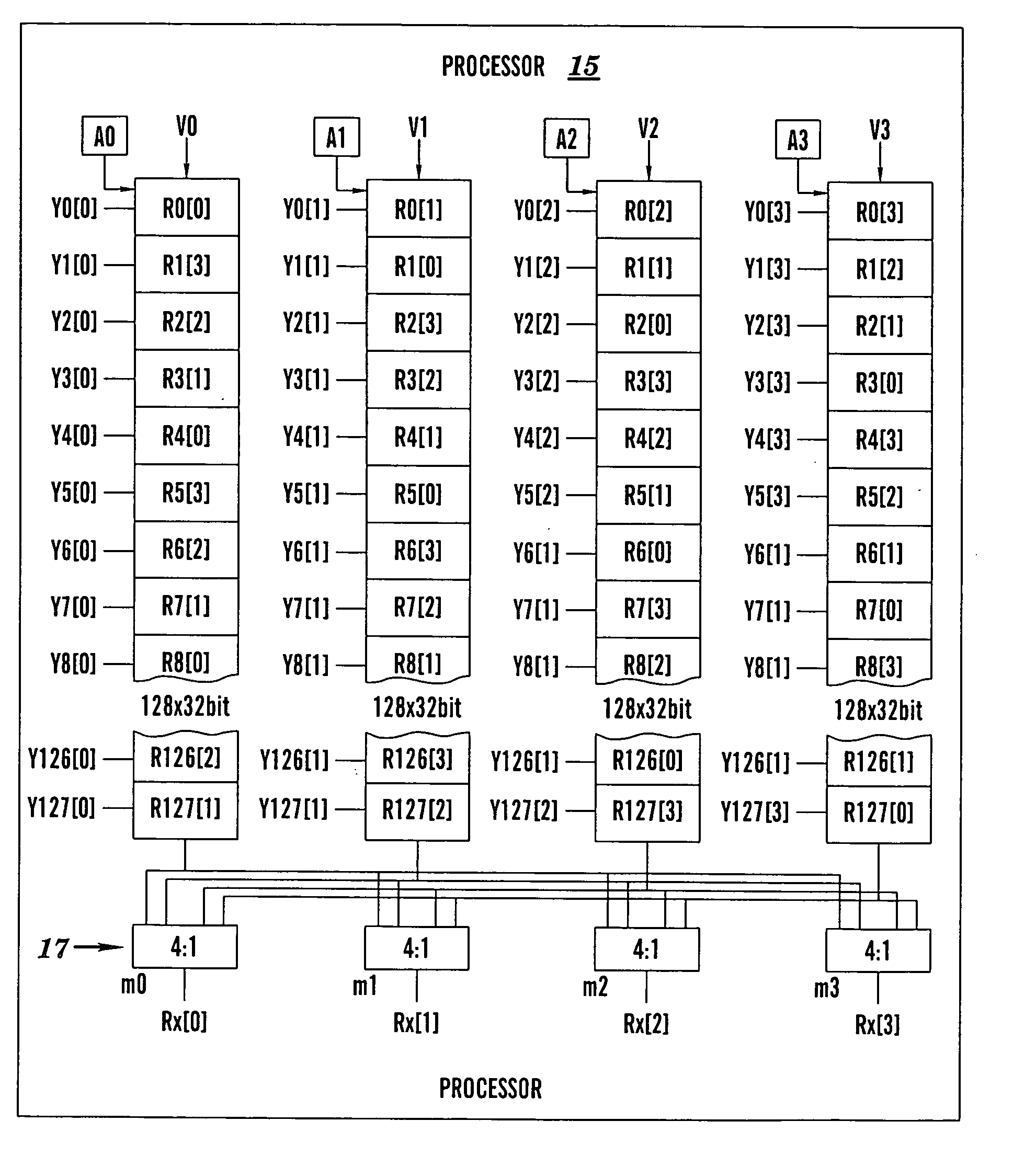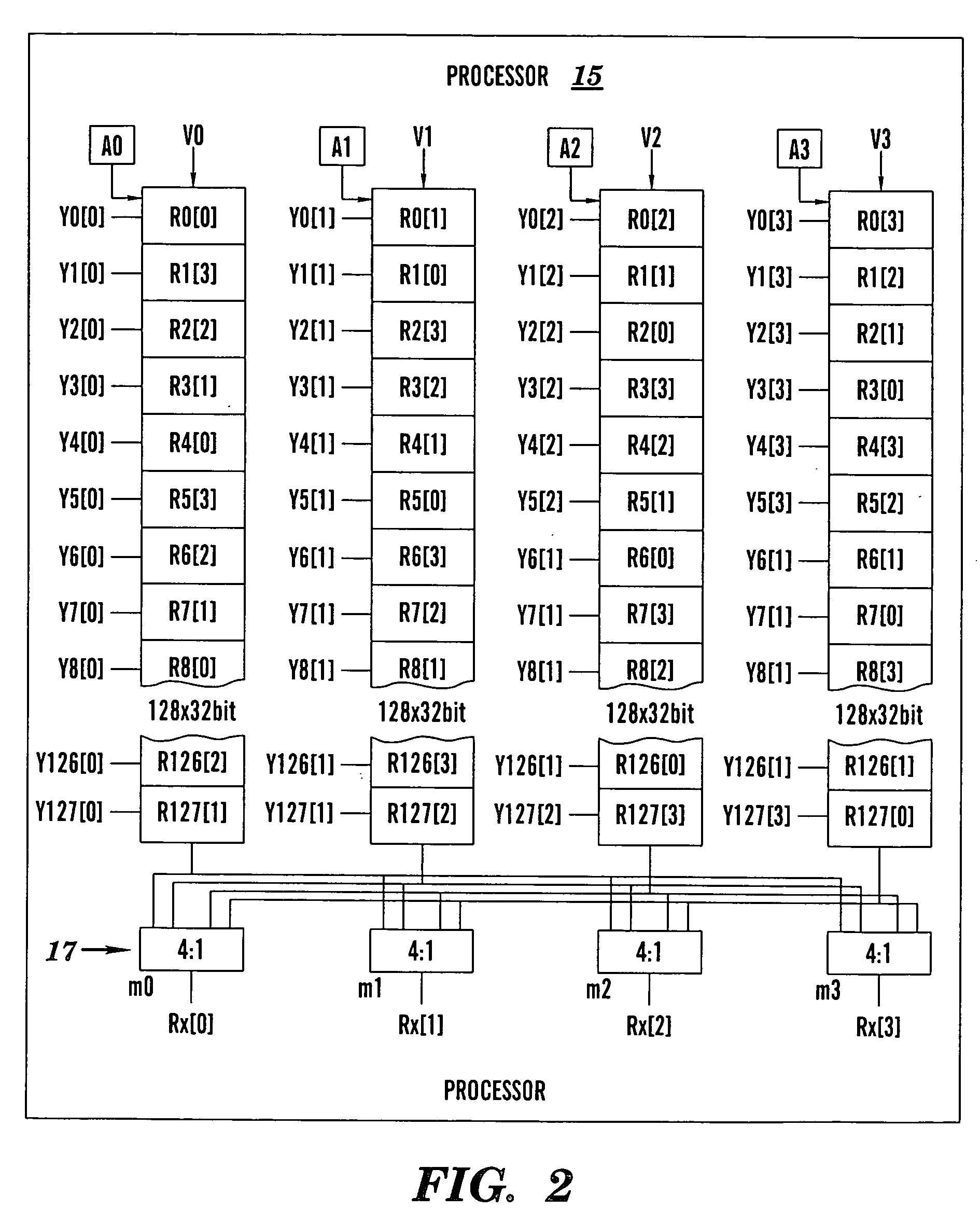Two dimensional addressing of a matrix-vector register array
a register array and matrix-vector technology, applied in the field of two-dimensional addressing of matrix-vector register arrays, can solve the problems of increasing (i.e., at least double) the number of required registers, and achieving the effect of efficient processors
- Summary
- Abstract
- Description
- Claims
- Application Information
AI Technical Summary
Benefits of technology
Problems solved by technology
Method used
Image
Examples
Embodiment Construction
[0023]FIG. 1 depicts a layout of a matrix 10 of data elements, in accordance with embodiments of the present invention. The matrix 10 comprises 128 rows (denoted as rows 0, 1, . . . , 127) and 4 columns (denoted as columns 0, 1, 2, 3). Rows 0, 1, . . . , 127 are addressed as registers R0, R1, R127, respectively (i.e., registers Rn, n=0, 1, . . . , 127). The columns are each divided into subcolumns as follows: [0024] column 0 is divided into subcolumns 128, 132, . . . , 252; [0025] column1 is divided into subcolumns 129, 133, . . . , 253; [0026] column 2 is divided into subcolumns 130, 134, . . . , 254; and [0027] column 3 is divided into subcolumns 131, 135, . . . , 255.
Subcolumns 128, 129, . . . , 255 are addressed as registers R128, R129, . . . , R255, respectively (i.e., registers Rn, n=128, 129, . . . , 255).
[0028]FIG. 1 also depicts data elements of the matrix 10. Each data element includes B binary bits (e.g., B=32). The data elements of the matrix 10 have the form Rn[m] wh...
PUM
 Login to View More
Login to View More Abstract
Description
Claims
Application Information
 Login to View More
Login to View More - R&D
- Intellectual Property
- Life Sciences
- Materials
- Tech Scout
- Unparalleled Data Quality
- Higher Quality Content
- 60% Fewer Hallucinations
Browse by: Latest US Patents, China's latest patents, Technical Efficacy Thesaurus, Application Domain, Technology Topic, Popular Technical Reports.
© 2025 PatSnap. All rights reserved.Legal|Privacy policy|Modern Slavery Act Transparency Statement|Sitemap|About US| Contact US: help@patsnap.com



